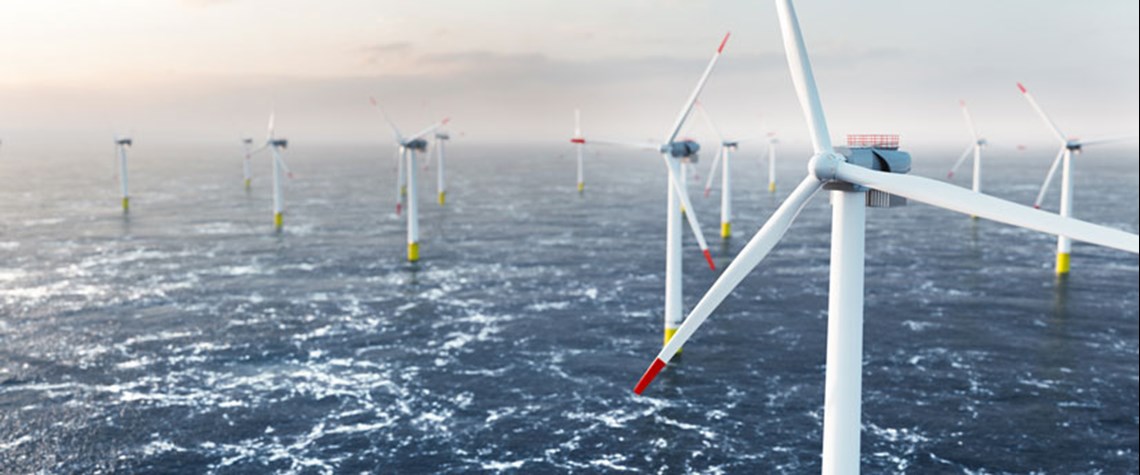Clean hydrogen is enjoying unprecedented political and business momentum, with the number of policies and projects around the world expanding rapidly, according to the IEA report The Future of Hydrogen.
Green hydrogen production is due to soar, heralding enormous potential for multiple industries on the path to net zero.
Hydrogen can enable renewables to provide an even greater contribution. It has the potential to help with variable output from renewables, such as solar photovoltaics and wind, the availability of which is not always well matched with demand. Hydrogen is one of the leading options for storing energy from renewables and looks promising to be a lowest-cost option for storing electricity over days, weeks or even months.
The UK recently announced plans to attract £4bn ($4.64bn) of investment to launch a country-wide hydrogen economy, while the US is upping funding to bring down clean hydrogen costs by 80pc in the coming decade. China’s new five-year plan sees hydrogen becoming one of the country’s six industries of the future, and the Dutch government has set a 70GW offshore wind target for 2050 in a bid to underpin electrification and create enough green hydrogen to decarbonise industries.
With the global energy sector in flux, the versatility of hydrogen is attracting stronger interest from a diverse group of governments and companies. It is clear now is the time to scale up technologies and bring down costs to allow hydrogen to become widely used.
According to analyst Michael Liebreich, 143pc of all the wind and solar installed globally to date would be needed just to replace the black and grey hydrogen currently used for chemical production and oil refining with green hydrogen produced from renewables.
While there is an obvious need to scale up hydrogen production, the industry and governments must align their goals and improve transparency and communication to achieve this. It is a Catch-22 situation, where governments must get a better understanding of the scaling potential from operators and local manufacturers to draw accurate and robust policies to support the sector, while the industry cannot develop scaling plans until the policies and frameworks from government are laid out.
Operators are caught in the middle as they attempt to mitigate financial risk while satisfying tender requirements from governments—e.g., to include green hydrogen production in offshore wind project bids—and committing to projects on which they can deliver while limiting their own exposure. This has led some of the companies that develop and integrate technologies for the offshore wind industry to reconsider their engagement with green hydrogen offshore and the pace to bring it to market.
The lack of clear and consistent communication between governments and investors means developers are shifting their focus to profit-generating projects rather than taking risks in pushing offshore energy boundaries.
Furthermore, as hydrogen is much less dense than most other energy carriers, it poses another significant and often-overlooked logistics problem—specifically, its transportation from future production sites to points of use.
Achilles heel
In many consumption centres around the world, Europe being a prime example, the potential for on-site clean hydrogen production is limited, necessitating its transportation from supply hubs with low-cost renewables. However, electric power cables are the Achilles heel for windfarms, being vulnerable to damage, expensive to repair and very dependent on copper pricing.
Strohm is a private supply chain company, focused on the offshore wind-to-hydrogen sector and supporting a reliable, faster and cheaper green energy transition around the world.
Following a £8.4mn investment from London-based investment trust HydrogenOne Capital earlier this year, we are developing safe and dependable pipeline solutions, whereby green hydrogen generated at offshore wind turbines can be transported to shore via subsea thermoplastic composite pipe (TCP) infrastructure.
Hydrogen is highly reactive and can seep between molecules of almost every possible container and can embrittle steel pipelines, so TCP provides an attractive alternative to steel for hydrogen transport.
It does not corrode or suffer embrittlement and has a superior fatigue life even in the most extreme environments (suspended from a floating wind turbine, for example), which exceeds that of steel. It is strong, lightweight and corrosion resistant, so it can be used to transfer and store energy, allowing hydrogen to be produced directly in the wind turbine or in a centralised platform.
The technology can be used to safely transport hydrogen, CO₂, ammonia and water, where steel solutions suffer from degradation and corrosion.
Hydrogen will inevitably play a major role in reaching global decarbonisation goals. As the economy moves to net-zero emissions, clean hydrogen and its derivatives will be especially vital in sectors that are traditionally hard to decarbonise, such as heavy industry and marine transport.
To access the best wind resources, offshore windfarms will be developed further away from the coast and often at a greater distance from areas of high energy demand. The most viable solution is to convert the power generated by offshore wind turbine generators directly into hydrogen offshore, alleviating the negative impacts of power conversion and cables and thereby maximising efficiency.
The time is right to tap into hydrogen’s potential to play a key role in a clean, secure and affordable energy future, and the offshore industry agrees, with a growing list of operators announcing ambitions to reduce the carbon footprint of their operations.
Caroline Justet is the VP of Europe for the leading manufacturer of TCP, Strohm.
This article is part of our special Outlook 2023 report, which features predictions and expectations from the energy industry on key trends in the year ahead. Click here to read the full report.








Comments